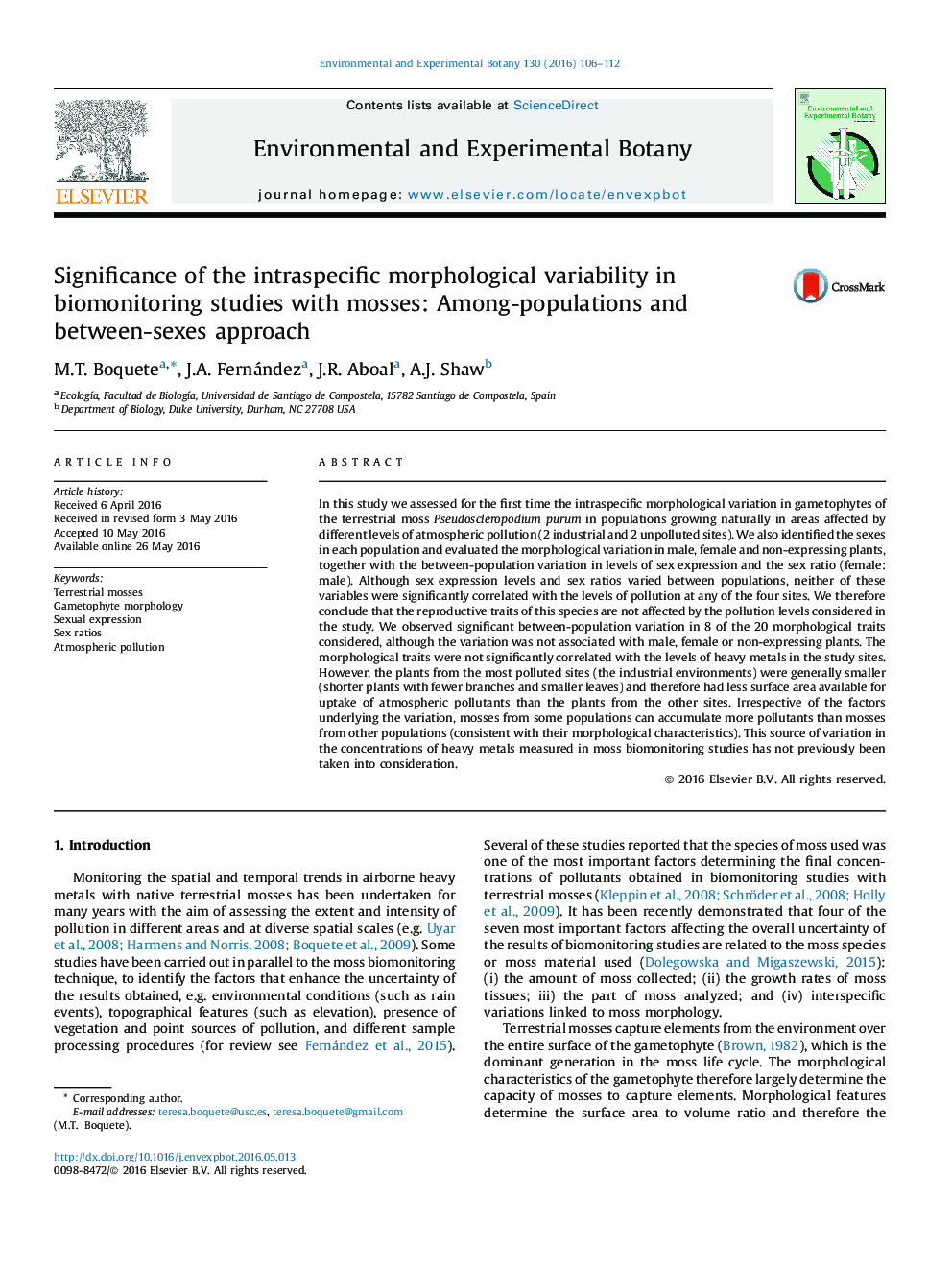| کد مقاله | کد نشریه | سال انتشار | مقاله انگلیسی | نسخه تمام متن |
|---|---|---|---|---|
| 4554025 | 1628047 | 2016 | 7 صفحه PDF | دانلود رایگان |
• Morphology, sex expression and sex ratio variability were studied in P. pururm moss.
• We found no significant correlations with the levels of pollution at any study sites.
• However, plants from the most polluted sites were generally smaller.
• These mosses can therefore accumulate fewer pollutants than mosses from clean sites.
• Intraspecific P. purum morphological variability affects the results of biomonitoring studies.
In this study we assessed for the first time the intraspecific morphological variation in gametophytes of the terrestrial moss Pseudoscleropodium purum in populations growing naturally in areas affected by different levels of atmospheric pollution (2 industrial and 2 unpolluted sites). We also identified the sexes in each population and evaluated the morphological variation in male, female and non-expressing plants, together with the between-population variation in levels of sex expression and the sex ratio (female:male). Although sex expression levels and sex ratios varied between populations, neither of these variables were significantly correlated with the levels of pollution at any of the four sites. We therefore conclude that the reproductive traits of this species are not affected by the pollution levels considered in the study. We observed significant between-population variation in 8 of the 20 morphological traits considered, although the variation was not associated with male, female or non-expressing plants. The morphological traits were not significantly correlated with the levels of heavy metals in the study sites. However, the plants from the most polluted sites (the industrial environments) were generally smaller (shorter plants with fewer branches and smaller leaves) and therefore had less surface area available for uptake of atmospheric pollutants than the plants from the other sites. Irrespective of the factors underlying the variation, mosses from some populations can accumulate more pollutants than mosses from other populations (consistent with their morphological characteristics). This source of variation in the concentrations of heavy metals measured in moss biomonitoring studies has not previously been taken into consideration.
Journal: Environmental and Experimental Botany - Volume 130, October 2016, Pages 106–112
